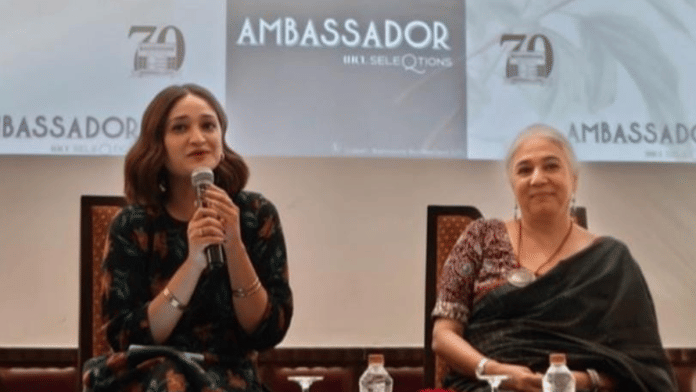New Delhi: The ego war between two of Delhi’s renowned colonial-era architects—Edwin Lutyens and Herbert Baker—is etched into the very design of Raisina Hill, the seat of power. It also reflects the changing attitude of the British Raj during the rise of nationalism in the 19th century.
Lutyens, who had called the Taj Mahal “rubbish”, only got the commission to build Delhi after he agreed to work with Baker. Unlike Lutyens, the South African architect wanted Delhi to represent Indian architecture and sensibilities along with the British Empire’s values. Together, the two were like horses pulling a carriage in opposite directions.
Charles Hardinge, then-Governor General of India didn’t trust him (Lutyens) with major public buildings, said historian Swapna Liddle at a talk titled ‘Delhi: City of Cities’ at the Ambassador Hotel on 7 September.
“That’s why Baker was brought to the committee. And Lutyens wasn’t too happy about it.”
To keep Baker at a distance, Lutyens told him to focus on the secretariat building while he worked on the Viceroy House, which is now the Rashtrapati Bhavan. When the foundations were laid and site drawings had come to life, Lutyens realised he had been upstaged by Baker—the dome of the Viceroy House couldn’t be seen from Kingsway, which is now the Kartavya Path.
“Even though he was the one who signed off on all designs, which specified the Raisina Hill slope, and the location of the buildings, he accused Baker of sabotaging him,” added Liddle.
Lutyens’ role in making Delhi is “highly exaggerated”, according to the historian. And Baker has faded from public memory.
In a small room packed with history enthusiasts, tourists, and Delhiites discovering their city, Liddle and author-historian Aanchal Malhotra, the moderator, shared stories that are integral to Delhi’s history. When the British construction of Delhi is discussed in public discourse, it is seen as an expression of imperial power. But this inference lacks nuance, she said.
“The politics at the time was not what we now imagine it to be. It was about the British Raj actually doing an image makeover by negotiating and acknowledging Indian demands. They were trying to project themselves as a more sympathetic, improved version of the Empire,” said Liddle. “They were telling people, look, we are not so bad after all.”
Also read: India wasn’t ready for Naina Dalal’s nude paintings in 1960s. At 90, she gets her solo exhibition
Names are important
The British reimagined a new and modern Delhi with wide roads meant for driving motor cars. In a nod to Indian sensibilities, low-rise gardens were designed, commercial demands were thrown to the wind, and aesthetics became the focus. And when in doubt, elephant statues were erected.
Part of the rebranding effort was also about the naming of streets in the city. All the radial roads were named after various rulers of the country. There’s Ashoka, Akbar, Aurangzeb Road and others. Among them is Pandara Road, now famously recognised as the city’s oldest typo.
“The commissioner of Delhi had once written to the NDMC, asking, ‘What does Pandara even mean?’ Turns out, it was supposed to be Pandava,” Liddle said.
Now, with the Narendra Modi government on a renaming spree, many of these streets are at the risk of losing their history.
“If you take Hauz Rani for example, nobody knows when it was given that name and by whom. But it was a site for the Satyagraha movement. If you change the name, you lose that important history,” she added.
The Delhi one calls home
Delhi’s history goes beyond its monuments, rulers, and conflicts. But it’s also about the people who call it home.
An audience member, expressing her frustration with the growing infrastructure chaos and traffic jams, asked the historians how they are able to love Delhi. Malhotra, who has written books on Partition and how the city became a safe home for her family, described her relationship with Delhi as one of both love and hate.
“It is only when I’ve been away from Delhi for a long time that I can appreciate it. But it’s a generous city. You just need to find your sweet spot,” she said.
Liddle, who moved from quiet Srinagar to loud Delhi in the mid-1980s, agreed. The street lights were too bright and the roads were too busy, but the architectural gems of the city made up for everything uncomfortable.
“I used to drag my boyfriend, who is now my husband, to every old landmark and had the best time,” Liddle said.
(Edited by Humra Laeeq)






